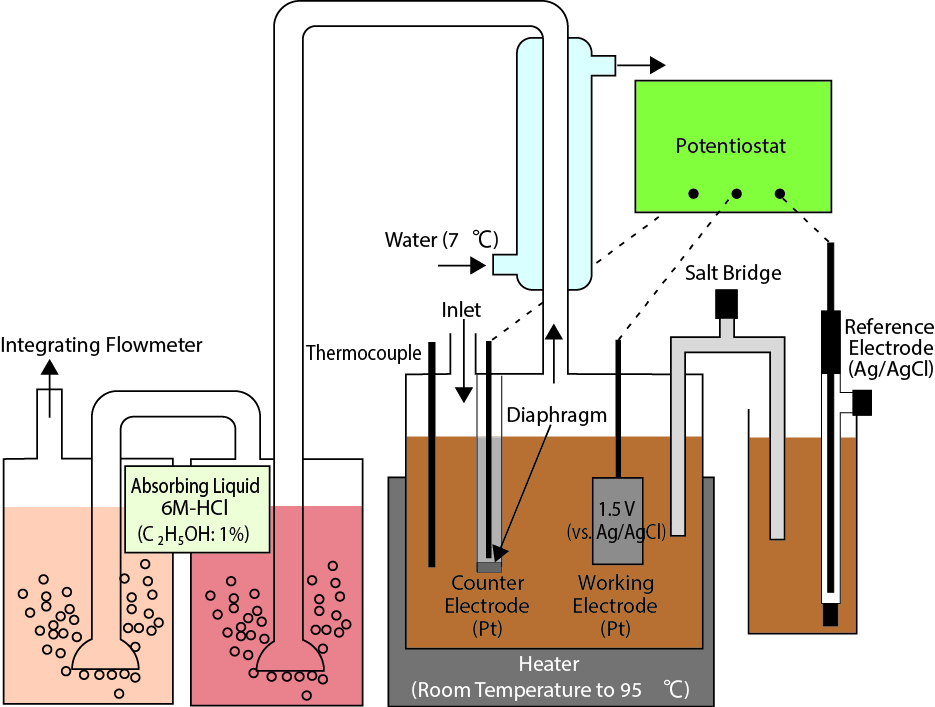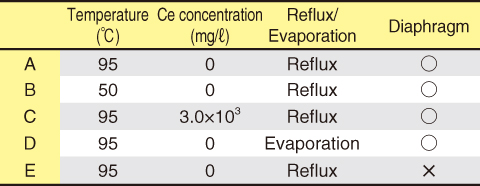
Fig.8-32 Schematic diagram of oxidation cell
Table 8-2 Experimental conditions for electrochemical oxidation

![Fig.8-33 Decreasing ratio of Ru concentration, [Ru]t/[Ru]0, with time](img/honbun/e2014_8-33.jpg)
Fig.8-33 Decreasing ratio of Ru concentration, [Ru]t/[Ru]0, with time
One of the platinum group elements, i.e., ruthenium (Ru), is a major fission product in high-level liquid waste (HLLW), which is to be disposed as vitrified waste. Platinum group elements precipitate in a glass fusing furnace. These precipitates influence the flow characteristics and electrical conductivity of a melting glass, which complicates the vitrification process. To stabilize the process, these platinum group elements should be removed from the solution before feeding it in the glass fusing furnace.
Ru tetraoxide (RuO4) has a high vapor pressure, which is sufficiently high to run off from the solution even at room temperature. If Ru ions in the solution could be oxidized to tetraoxide, Ru could be removed from the liquid phase.
We studied an electrochemical oxidation method to oxidize Ru ions in solution to separate Ru as tetraoxide (Fig.8-32). The advantage of this method is that it does not require additional oxidizing or extraction reagents. Electrical oxidation, however, is necessary for long oxidation times. To increase the oxidation rate, we conducted experiments to clarify how the following four fundamental conditions (Table 8-2) influence electrochemical oxidation. Results of experiments involving a decreasing rate of Ru concentration are shown in Fig.8-33.
(1) Electrolyte temperature
When the electrolyte reaches a high temperature, Ru ions easily migrate in the solution, so the oxidation rate can be increased.
(2) Presence of promoter elements
Cerium ions are reported to promote the Ru oxidation rate. We confirmed that Ru migrates to the gas phase effectively with cerium. Cerium ions are electrically oxidized to tetravalent ions, i.e., Ce(IV), which stabilize oxidized octavalent Ru, preventing a back reaction, in the solution. Therefore, the removal of RuO4 to gas phase becomes more efficient.
(3) Evaporation or reflux of condensed phase
We were concerned about the possible absorption of gaseous tetraoxide Ru into the condensed water in the condenser and its return in the water to the electrolyte cell as reduced Ru dioxide. But the evaporation or reflux conditions do not directly affect the electrochemical oxidation efficiency.
(4) Diaphragm for counter electrode
imple electrical oxidation system that is easy to maintain should be designed considering the HLLW treatment. If the diaphragm at the counter electrode is not necessary, it can be eliminated to simplify maintenance. However, the diaphragm is necessary for efficient oxidation.
We obtained the following conditions for fast electrochemical oxidation: (1) higher temperature (95 ℃), (2) Ce coexistence at 3000 mg/ℓ, and (3) use of a diaphragm for counter electrode. The oxidation rate achieved should be three times faster under these optimized conditions.
The present study was partly supported by “Development of High-level Liquid Waste Conditioning Technology for Advanced Nuclear Fuel Cycle” from the Ministry of Education, Culture, Sports, Science and Technology of Japan (MEXT).
<Previous: 8-12 | Next: 9 Nuclear Fusion Research and Development >